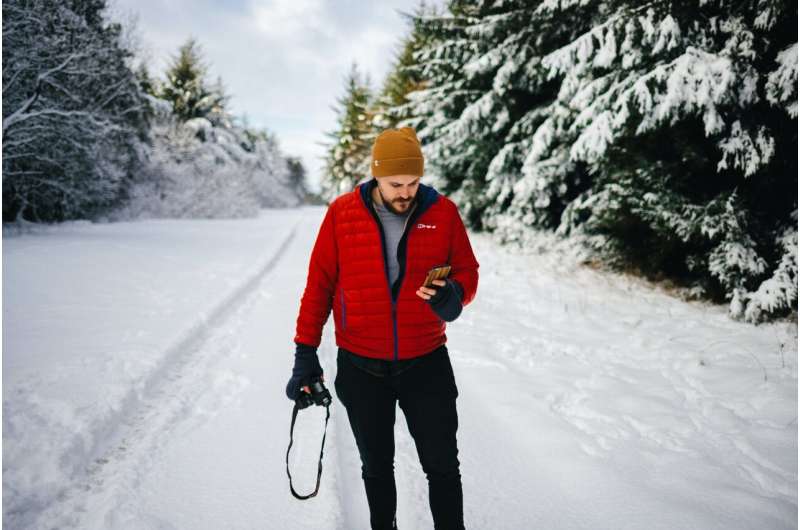This article has been reviewed according to Science X's editorial process and policies. Editors have highlighted the following attributes while ensuring the content's credibility:
fact-checked
trusted source
proofread
How to avoid hypothermia and frostbite as Arctic temps chill the US

Subfreezing temperatures will continue to plague much of the country this week, putting outdoor sports enthusiasts, football fans, unsheltered people and stranded motorists at increased risk of hypothermia and frostbite.
At least five people in the U.S. have died of suspected hypothermia in recent days, according to the Associated Press.
Acute care nurse practitioner Stephen Wood, program director of Northeastern's Extreme Medicine certificate program, answered questions about what hypothermia is, what it does to the body, how to prevent it—and how hypothermia differs from frostbite.
The answers have been edited for brevity.
What is hypothermia?
Hypothermia occurs when the body is losing heat faster than it can produce it and your core body temperature starts to drop.
Our bodies like to be within a fairly narrow range of temperature. We think of 98.6 as the norm, but that temperature can range from 96 to 100 degrees.
A drop below 90 degrees is considered to be hypothermia. Severe hypothermia is anything below 82 degrees Fahrenheit for core body temperature.
Certain enzymes don't work. Certain hormones and neurotransmitters stop working. Our bodies start to become acidic, developing what is called metabolic acidosis and stop breaking down glucose for energy.
When you have cold plus acidosis, organs and bodily systems start to fail. With severe hypothermia, your metabolism slows to a near stop. Your brain isn't utilizing any energy.
People actually have survived at those temperatures for hours. We've seen it with cold water drownings.
For hypothermia victims who are found in time, the warming-up period is critical. Their heart is particularly vulnerable to going into abnormal rhythms. We have to be gentle about handling them and closely monitor their electrolytes.
Why do some hypothermia victims remove clothing?
The phenomenon is called paradoxical undressing and we see it generally in people with moderate hypothermia.
Blood starts to shunt from people's periphery—arms and legs—to their core. The blood tricks people's thermoregulatory system into thinking they are warm so they start to shed their clothing.
With hypothermia, people start to get confused and make bad decisions. It definitely contributes to paradoxical undressing as well.
Your brain is one of the organs most sensitive to temperature. One of the very early signs of hypothermia is confusion.
I've seen paradoxical undressing a couple of times. I was on a trail and found someone's hat, jacket and gloves and found the person sitting under a tree with only a T-shirt on.
When does cold weather get dangerous?
When the temperature outdoors is under 40 degrees you can see hypothermia develop in as little as 30 minutes.
Temperature plays a role, but wind chill and moisture do as well.
With wind chill, you're losing body heat through convection. The windy currents of air transfer heat from your body to the colder air.
If your skin is wet, you'll lose heat through conduction. If you become sweaty during a hike and sit on the cold ground in the wind, that's a setup for disaster.
Is there a connection with frostbite?
Hypothermia relates to the body's core temperature. Frostbite occurs when your tissue freezes. The conditions often go together.
Just like with burns, you can have varying degrees of frostbite depending on how deeply it goes into the tissues. In third-degree cases cells freeze and form ice crystals and die. In severe cases, you can have tissue that's completely dead and requires amputation.
How can you protect yourself and loved ones?
It really comes down to being prepared for the cold and dressing appropriately. Cover exposed skin—wear a hat, wear layered clothing, especially if you are going to be active so you can take clothing on and off.
A really good wind shell over a warm jacket can prevent heat loss as well. I'll wear my nice puffy jacket on cold winter hikes, but I'll have it under a wind shell.
You need the right clothing that wicks moisture away from you, which means avoiding cotton. Cotton is probably the worst choice when it's cold.
This story is republished courtesy of Northeastern Global News news.northeastern.edu.





















